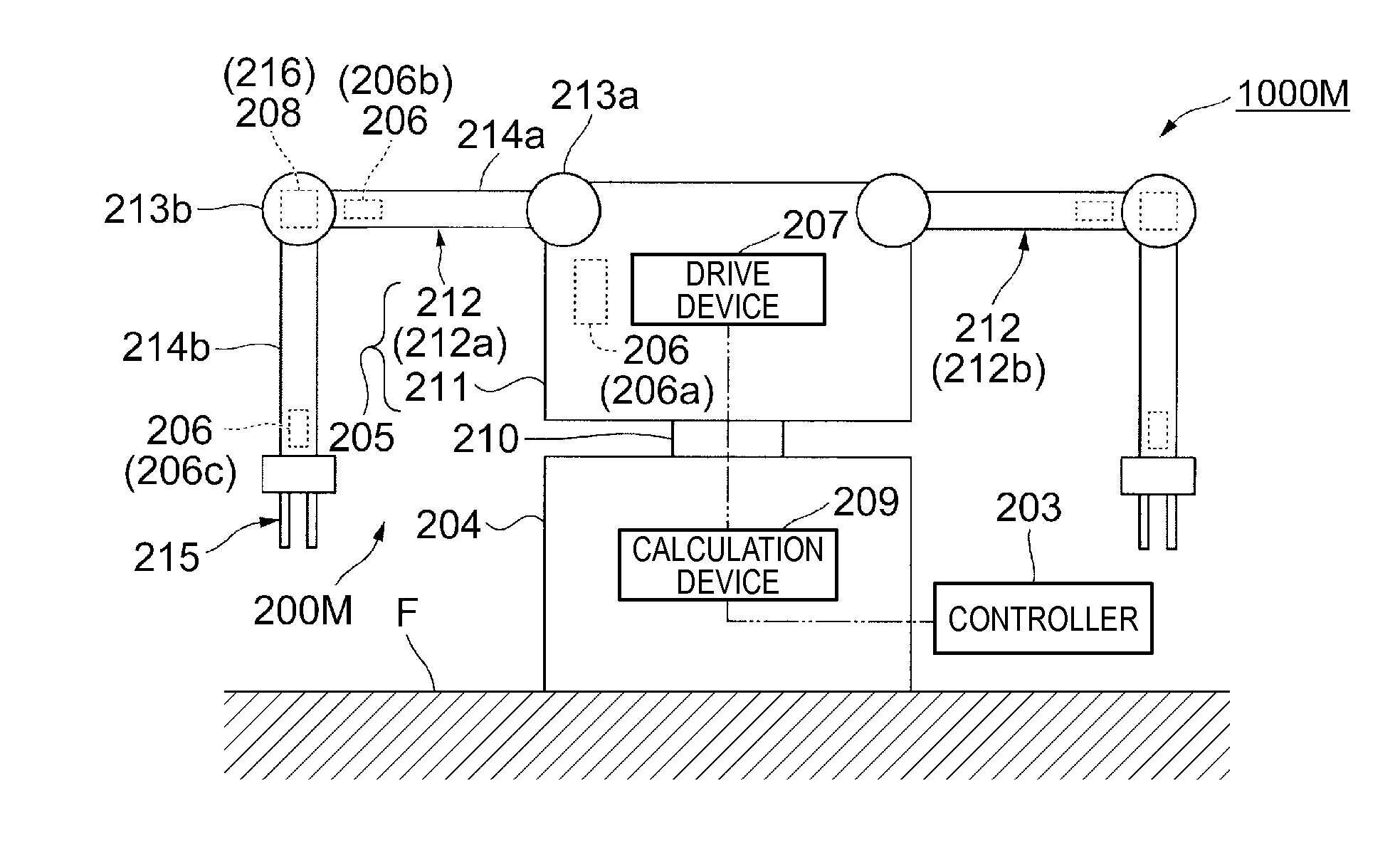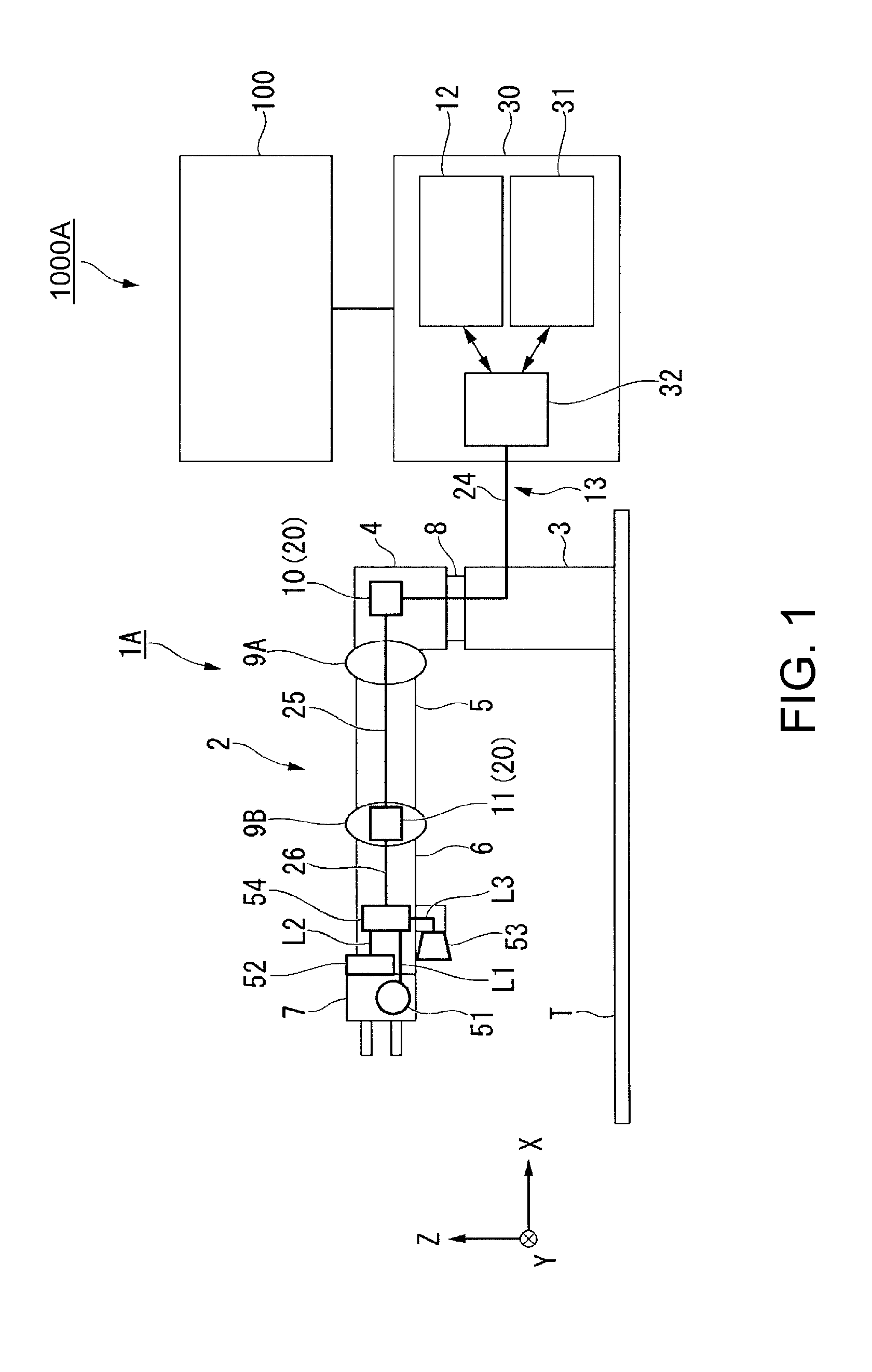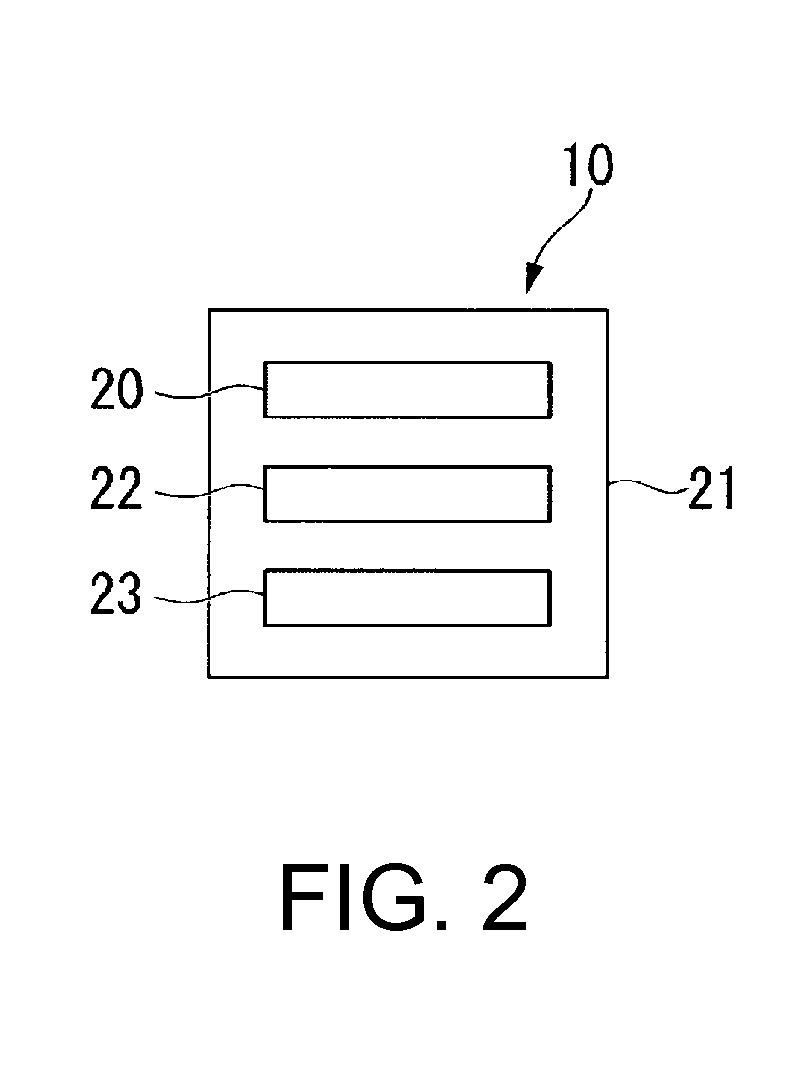Robot, controller, and robot system
a robot and controller technology, applied in the field of robots, can solve the problems of increasing the number of sensors in the robot arm with the reduction in size, reducing the price of sensors, and reducing the reliability of sensors, so as to achieve convenient change, improve convenience, and improve accuracy.
- Summary
- Abstract
- Description
- Claims
- Application Information
AI Technical Summary
Benefits of technology
Problems solved by technology
Method used
Image
Examples
first embodiment
[0092]First, a robot 1A of the first embodiment will be explained with reference to FIG. 1.
[0093]FIG. 1 is a side view showing a schematic configuration of the robot 1A.
[0094]Further, in the following explanation, an XYZ orthogonal coordinate system is set and the positional relations among the respective members will be explained with reference to the XYZ orthogonal coordinate system. Specifically, lateral directions of the paper surface in FIG. 1 are referred to as X-axis directions, directions orthogonal to the paper surface in FIG. 1 are referred to as Y-axis directions, and vertical directions orthogonal to the paper surface in FIG. 1 are referred to as Z-axis directions. Further, directions around the X-axis, the Y-axis, and the Z-axis are referred to as a θX-direction, a θY-direction, and a θZ-direction, respectively.
[0095]The robot 1A is the so-called horizontal articulated robot (SCARA robot) including a robot arm 2 as shown in FIG. 1. The robot arm 2 has a base 3, a t...
second embodiment
[0119]Next, a robot 1B of the second embodiment will be explained with reference to FIG. 3.
[0120]FIG. 3 is a side view showing a schematic configuration of the robot 1B.
[0121]In the following explanation, the explanation of the parts equal to those of the robot 1A will be omitted and the same signs will be attached to the parts in the drawings.
[0122]As shown in FIG. 3, the robot 1B has a configuration in which a serial signal line 40 is used for the above described first signal line 24, second signal line 25, and third signal line 26. Further, in the hand unit 7, a force sensor (force detector) 55 and tactile sensors (detection unit) 56 are provided as end effectors in place of the illumination device and the imaging device 53, and connected to the sub-controller 54 via the respective wires L1 to L3. The rest of the configuration is basically the same as that of the above described robot 1A.
[0123]In the case of using the serial signal line 40, the detection signals detected by ...
third embodiment
[0125]Next, a robot 1C of the third embodiment will be explained with reference to FIG. 4.
[0126]FIG. 4 is a side view showing a schematic configuration of the robot 1C.
[0127]In the following explanation, the explanation of the parts equal to those of the robot 1A will be omitted and the same signs will be attached to the parts in the drawings.
[0128]As shown in FIG. 4, the robot 1C has a configuration in which another sub-controller (second control unit) 57 is added to the configuration of the robot 1B shown in FIG. 3. The sub-controller 57 is connected to the tactile sensors 56 via the wires L3, and connected to the sub-controller 54 via a wire L4. The rest of the configuration is basically the same as those of the above described robots 1A, 1B.
[0129]In the robot 1C of the embodiment, even when the numbers of sensors (detection units) and sub-controllers (second control units) increase, the number of signal lines (wires) may be significantly reduced by daisy chain connection us...
PUM
 Login to View More
Login to View More Abstract
Description
Claims
Application Information
 Login to View More
Login to View More - R&D
- Intellectual Property
- Life Sciences
- Materials
- Tech Scout
- Unparalleled Data Quality
- Higher Quality Content
- 60% Fewer Hallucinations
Browse by: Latest US Patents, China's latest patents, Technical Efficacy Thesaurus, Application Domain, Technology Topic, Popular Technical Reports.
© 2025 PatSnap. All rights reserved.Legal|Privacy policy|Modern Slavery Act Transparency Statement|Sitemap|About US| Contact US: help@patsnap.com



